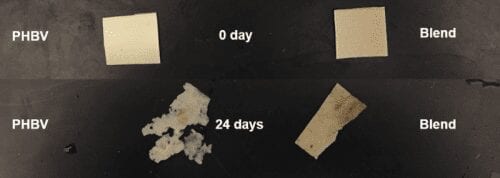
CREDIT
Paul Blake / International Center for Tropical Agriculture
The discovery of genes responsible for asexual reproduction in a tropical grass may reduce negative impacts of cattle farming. The grass captures carbon, reduces gas emissions from soils, restores degraded land, and improves cattle health and productivity
Cattle are a mainstay for many smallholders but their farms are often on degraded lands, which increases cattle’s impact on the environment and lowers their production of milk and meat. Researchers at the International Center for Tropical Agriculture (CIAT) have shown that Brachiaria grass species can reduce greenhouse gas emissions from cattle and increase productivity – and breeding improved varieties can potentially augment the environmental and economic benefits.
But the breeding process is difficult, time-consuming and expensive. A breakthrough on Brachiaria‘s complex genome may make breeding much more efficient, and potentially increase the speed with which new grasses begin benefiting cattle farmers and the environment.
Margaret Worthington, a geneticist at CIAT and the University of Arkansas, and colleagues created the first dense molecular map of B. humidicola, a robust and environmentally friendly forage grass. They also pinpointed the candidate genes for the plant’s asexual reproductive mechanism, which is a huge asset for plant breeders. The findings were published in January in BMC Genomics.
“The idea is to create a better crop with less time and less money and to get it out faster to farmers,” said Worthington. “By using this molecular marker, you increase the odds of finding that rare winner.”
Traditional plant-breeding methods for Brachiaria grasses involve one of two complex techniques. One is to grow the plant to seed, and to study the seeds under a microscope to determine if the plant reproduced asexually. The other involves excising the plant’s embryos and conducting a similar analysis. Both techniques require many weeks, significant funds and highly trained specialists.
Asexual reproduction through seed, called apomixis, is key for developing new crop varieties for widespread use. Crops that reproduce through apomixis conserve the same traits from one generation to the next, essentially locking in sought-after characteristics such as drought tolerance or high nutritional value. Plants that reproduce sexually do not reliably pass on desired traits to subsequent generations.
Seeds, perpetually
With this molecular marker, plant breeders can run a quick and inexpensive test when Brachiaria grasses are seedlings to identify whether they reproduce through apomixis. The results are available in a couple of weeks. This allows plant breeders to select only asexually reproductive plants for trials, allowing them to allocate more time and resources to plants that have the potential to produce new cultivars.
Brachiaria grasses have often been considered an “orphan crop,” due to a lack of investment in research, but their potential for making tropical farms more productive and better for the environment is well known among tropical forage specialists. One recent study found that B. humidicola was especially adept at reducing the nitrous oxide, a strong greenhouse gas, emitted from soil as result of cattle urine deposition. In addition, CIAT researchers have identified mechanisms that this tropical grass uses to efficiently acquire nutrients from soil.
Brachiaria breeders also value apomixis for smallholders in developing nations who have limited resources for investing in improving their farms. Improved grass varieties that produce sufficient quantities of trait-retaining seeds can eliminate the need to purchase new seeds for every planting, which is a potentially expensive barrier to adoption.
“This breakthrough allows for the acceleration of our breeding program for multiple traits, including the development of tropical forages that can help reduce greenhouse gas emissions and make farming more eco-efficient,” said Joe Tohme, a senior scientist at CIAT and study co-author.
“This discovery represents a milestone in the path toward developing mitigation technologies in the livestock production sector,” said Jacobo Arango, a study co-author who is an environmental biologist from CIAT and a Lead Author for the next Assessment Report on Climate Change Mitigation of the Intergovernmental Panel on Climate Change (IPCC).
Learn more: Genetic breakthrough on tropical grass could help develop climate-friendly cattle farms
The Latest on: Brachiaria grasses
[google_news title=”” keyword=”climate-Brachiaria grasses” num_posts=”10″ blurb_length=”0″ show_thumb=”left”]
via Google News
The Latest on: Brachiaria grasses
- Is Dog Pee Killing Grass in Your Lawn? Here’s How to Fix Iton May 7, 2024 at 4:40 am
He always urinates in the same spot next to the front walkway. The dog pee is killing grass in the spots where he eliminates. Can you explain how to repair grass from dog urine? A: Dogs killing ...
- Grass Valley, CA Weather Conditionson May 5, 2024 at 5:00 pm
Thank you for reporting this station. We will review the data in question. You are about to report this weather station for bad data. Please select the information that is incorrect.
- Best grass trimmers and lawn edgers 2024: top trimmers for every gardenon April 30, 2024 at 5:00 pm
The best grass trimmers can tidy the lawn edges easily and trim hard-to-reach grass without much hassle. The worst we’ve tested leave straggly grass and stubborn weeds in the garden, suffer far too ...
- Minnesota based grass fed beefon April 26, 2024 at 2:41 am
Matt Maier, Owner and Chief Regenerative Renegade for Thousand Hills Lifetime Grazed, joins us live to share his story with regenerative agriculture and how his grass-fed beef came to be.
- Ashlie Miller: When the grass is greener next dooron April 19, 2024 at 4:59 pm
My neighborhood walks often look more like a saunter while I stop to snap a picture of this iris, that azalea or those clematis. I enjoy sharing them with friends in my Facebook stories to ...
- Native Grasseson April 18, 2024 at 7:30 pm
Grasses have been around for half a millennia or so, providing some of the most diverse and unique vegetation in Australia. Many upright leafy plants are classed as grasses but today Clarence is ...
- The Best Grass Seed for a Full, Green Lawnon April 15, 2024 at 5:46 am
Many homeowners dream of a lush, green carpet of grass upon which their children and pets can frolic. Growing a lawn that makes neighbors green with envy begins with choosing the right grass seed.
- The definitive guide to fescue grasson April 10, 2024 at 11:14 am
This commission does not influence our editors’ opinions or evaluations. Fescue grass is a low-maintenance option for creating a resilient, deep-green lawn. Turf-type tall fescue is ideal for ...
- Best artificial grasses: Top 10 picks for effortless landscaping and year-round greeneryon April 10, 2024 at 6:43 am
Best artificial grasses: Discover the top 10 picks for hassle-free maintenance and evergreen beauty, ideal for your landscaping needs. Are you tired of spending endless hours mowing, watering ...
via Bing News











